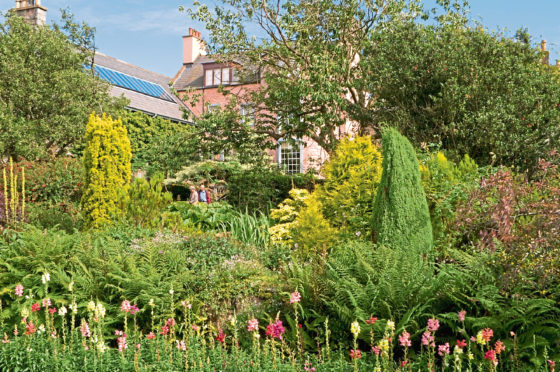
At this time of year I’d usually be drawing up a list of gardens to visit in the months ahead. This year that list may have to be curtailed but when travel restrictions are eventually lifted then there is one garden in particular I’d recommend.
Broughton House in Kirkcudbright was the home of EA Hornel, one of the leading lights of the Glasgow Boys, that group of artists who in the early part of the 20th Century turned old ideas about painting on their head. When he wasn’t in his studio, Hornel could be found in his garden planting many of the flowers and trees that would later end up on his canvases.
Today Broughton House and its garden are in the care of the National Trust for Scotland but Hornel’s spirit is definitely still present in this delightful half-acre, which slopes gently towards the Dee estuary.
Gardener Mike Jack cares for the garden today and, while visitors have been absent during lockdown, he’s been overseeing the laying of a new path, made from wide slabs of smooth sandstone, that in future will allow less agile visitors to easily access the lawns and flowerbeds tucked away behind Kirkcudbright’s High Street.
This new access is needed because the existing route around the garden takes in what’s is probably Broughton’s most renowned feature – a stepping stone pond.
“In spring when the cherry tree above it drops its petals on to the water it is easy to mistake it all for solid ground,” says Mike. “In fact, we have a record of one housemaid falling into the water when she was taking a tea tray to Hornel in his summerhouse.”
Obstacles aside, Broughton House garden is filled with Japanese influences, introduced by Hornel after voyages to the East. There are stone lanterns, gnarled wisterias and ferns and mosses, as well as the cherry trees that found their way into so many of his paintings.
The garden was a typical medieval “Lang rig”, one of those long and narrow stretches of fertile ground used for raising vegetables, but Hornel bought the house next door to take over this ground as well and he had a glasshouse built to his own design. He also installed a bench where, on good days, he would sit and watch the boats on the estuary and take in the view of the Galloway hills. Today you can still sit on the bench and enjoy the same view.
“We don’t just grow the kind of plants Hornel would have grown, but we have been faithful to the spirit of the place,” says Mike. “That’s one of the reasons why we started growing vegetables in the garden, because food would have once been grown here for the house.
“And, despite trying to keep them out of sight, the compost bins are one of the most popular elements.”
One garden to put on your list of must-sees for the future is the creation of artist EA Hornel and, says Agnes Stevenson, it offers a few extra surprises

Enjoy the convenience of having The Sunday Post delivered as a digital ePaper straight to your smartphone, tablet or computer.
Subscribe for only £5.49 a month and enjoy all the benefits of the printed paper as a digital replica.
Subscribe